The First Polish Armoured Division
Eighty years ago today, 2 September 1944, they buried my maternal grandfather, Władysław Surowiec, at the side of a road on the same day he was killed in action in northern France.
He was 36, and a bombardier in the 1st Anti-Tank unit of the 1st Polish Armoured Division (1PAD). His military death certificate shows he had three children, which indicates that he knew that his younger daughter, Eugenia, had died in Uzbekistan. He was spared the realisation that the war he died for did not save his country, and that his farm north of Zaleszczyki was handed over by the Allies to the Soviets.
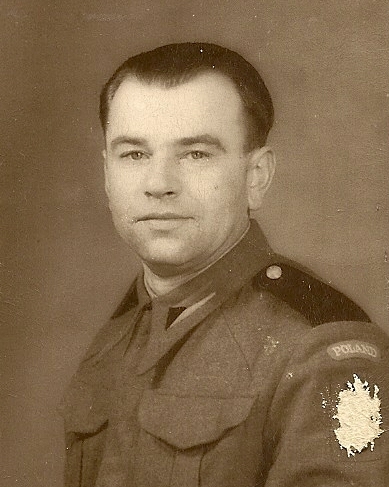
His was grave number 29 of 40 on the road between Mianny and Cahon Gouy, near Abbeville, and he was among three from the 1PAD who died the same day in a place I could not at first find—Gonny sur Somme—which turned out to be Gouy, near the Somme river.
This is the photograph my babcia received after his death. A military historian answered my question as to why the insignia on his arm was scratched off: he, like so many others, was wearing a borrowed 1PAD jacket, identified by its black epaulettes.
“No, this can’t be right,” said my mother when she saw the word “Czortków” (Devils) in his military papers, but by then I had read Evan McGilvray’s The Black Devils’ March – a Doomed Odyssey, and could assure her that that was the name that the 1PAD became known as, and it was probably more for their wizardry in the field than any devilry.
This was the man who showed me that our family history was real, under circumstances that were such a coincidence, maybe it did involve a bit of magic on his part. I remember the date exactly, because it was Anzac Day. The year would have been either 2007 or 2008. I happened to be making myself a cup of tea, turned on the TV, and caught someone on breakfast TV talking about a relative buried in a commonwealth war cemetery.
Before, all I knew of my grandfathers was that both had died in the war, one in France, one in Italy, but that any records were destroyed. The past was not something my family dwelled on in front of us, although I knew from the rowdy post-dinner conversations my father had with friends and family that there was something deeper.
That Anzac Day, I typed Commonwealth War Cemeteries (I did not then have the information about “side of the road”) into a search engine, and found a photograph of my maternal dziadek’s headstone at the Canadian War Cemetery in Leubringhen, south of Calais. He lies with 18 other Poles, including “A Soldier of the 1939–1945 War, Known unto God.” I am glad they are under the care of the Canadians, because they fought some fierce battles before and after 2 September 1944. The cemetery is arranged so that the Canadian casualties embrace their guests in the middle section. Very polite.
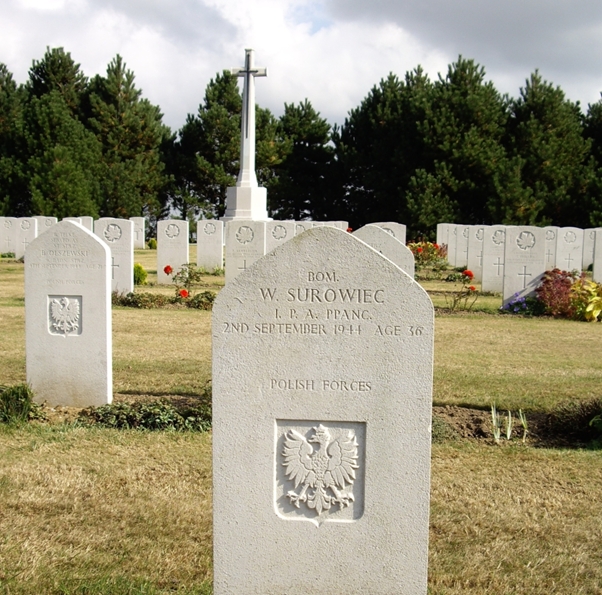
_______________
The book helped me map out the route that the 1PAD, led by General Stanisław Maczek, took through France. The division had been formed in Britain from Polish soldiers defeated in Poland in 1939 who managed to escape the German and Russian invasions. The Polish soldiers who had reached Britain in 1940, were entrusted with the protection of the Scottish coast. General Maczek may have been as frustrated as his men with being out of the battle lines, but he used the time to train his men and rebuild his armoured unit. Several hundred men like my grandfather, who had escaped Soviet forced-labour facilities in 1942, helped make up the numbers needed for a full division.
Relations between British and Polish command were strained in 1944, which led to the Poles joining the Normandy invasion after the Allies, who they found stalled around Caen.
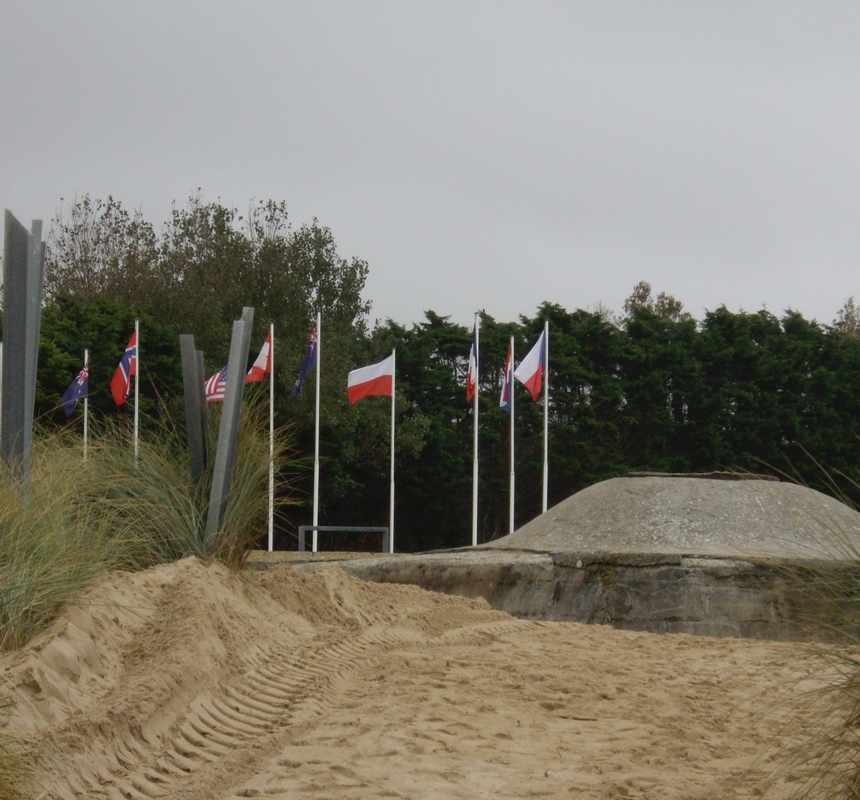
_______________
My husband and I followed the Polish route the best we could in September 2009. We started where the Poles landed on 29 July 1944 on the beach at Arromanches-Les-Bains, and where there are still signs of the massive Mulberry harbour construction blocks, and a museum on the seafront with Polish among the Allied flags.
The Poles cut through the Germans at Caen, pushed through the Falaise-Chambois pocket (Falaise Gap) on 23 August, and continued towards Abbeville, which the 1PAD captured on 3 September 1944.
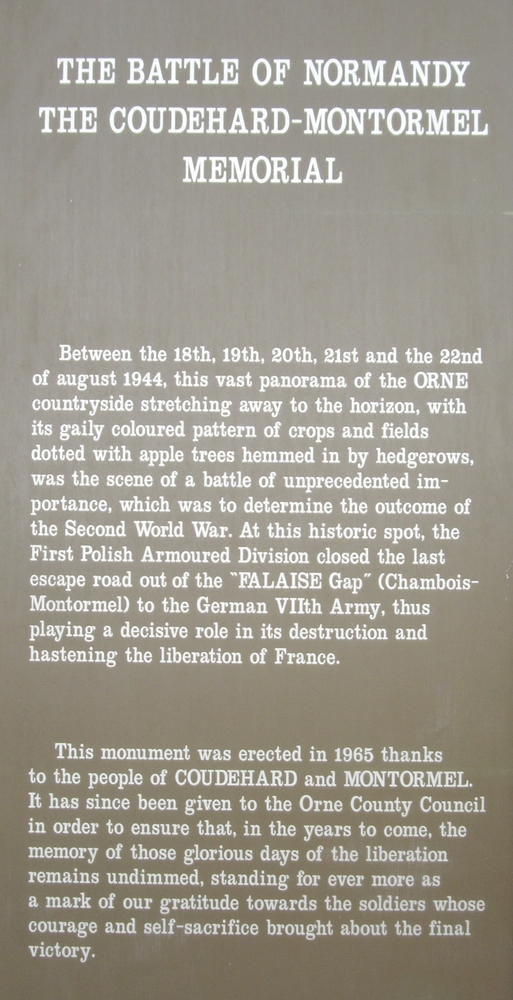
We found memorials in most of the towns and villages, like this one in Coudehard. A few kilometres away, Memorial Montormel Museum stands on the site of the August battle, on Mont Ormel, one of the few hills overlooking an otherwise mostly flat countryside. It shares the story of the four Allied units that removed the Germans from the hill: the 1st Polish, the 4th Canadian, 2nd French, and the 90th American.
Władysław Surowiec was promoted from rifleman to bombardier on 21 August 1944. During a battle that had according to one operational report lost up to 25 percent of its “fighting establishment,” it could only mean that he replaced someone.
I have trawled through orders of battles, trying to find more details about his anti-tank unit on 2 September, but they seemed to be quickly organised support regiments, attached to whatever other unit needed them to search out opposing tanks.
On 1 September, two anti-tank regiments headed with other 1PAD brigades and regiments towards Abbeville. At 10h30 the next day, reports came in of “contact with the enemy” and bridges over the Somme river near Abbeville blown up.
I am glad that my grandfather was not left long before being buried. And I am glad that he is now resting among the 704 men he fought with in northern France, and the two young men who died with him in Gouy: Tadeusz Szyszko and Kazimierz Popczyk, who served as Z Olesnicki, both aged 27.
The other Poles in the Canadian War Cemetery in Leubringen:
Stanisław Krzemionka, died in Abbeville on 1 September aged 24;
Jan Tyrna, who served as J Kos, died on 1 September aged 22;
Karol Dudek, died in Langannerie on 2 September aged 25;
B Telke, served as B Olszewski, died on 4 September aged 21;
E Pala, died on 4 September aged 24;
J Brzeżniak, died on 4 September aged 36;
B Skodda, who served as B Grabowski, died on 4 September aged 27;
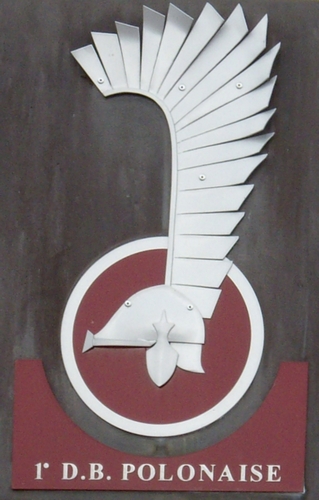
J Ferenc, died 4 September aged 32;
A Zakrzewski, died on 5 September aged 29;
J Lipa, died on 5 September aged 26;
ZT Cwil, died on 5 September aged 18;
KA Manugiewicz, died on 5 September aged 27;
S Zabijak, died on 5 September aged 39;
J Broekere, died on 7 September aged 25;
C Żyżyk, died 24 September aged 34;
And the soldier known only to God. To you all, spoczywajcie w pokoju.
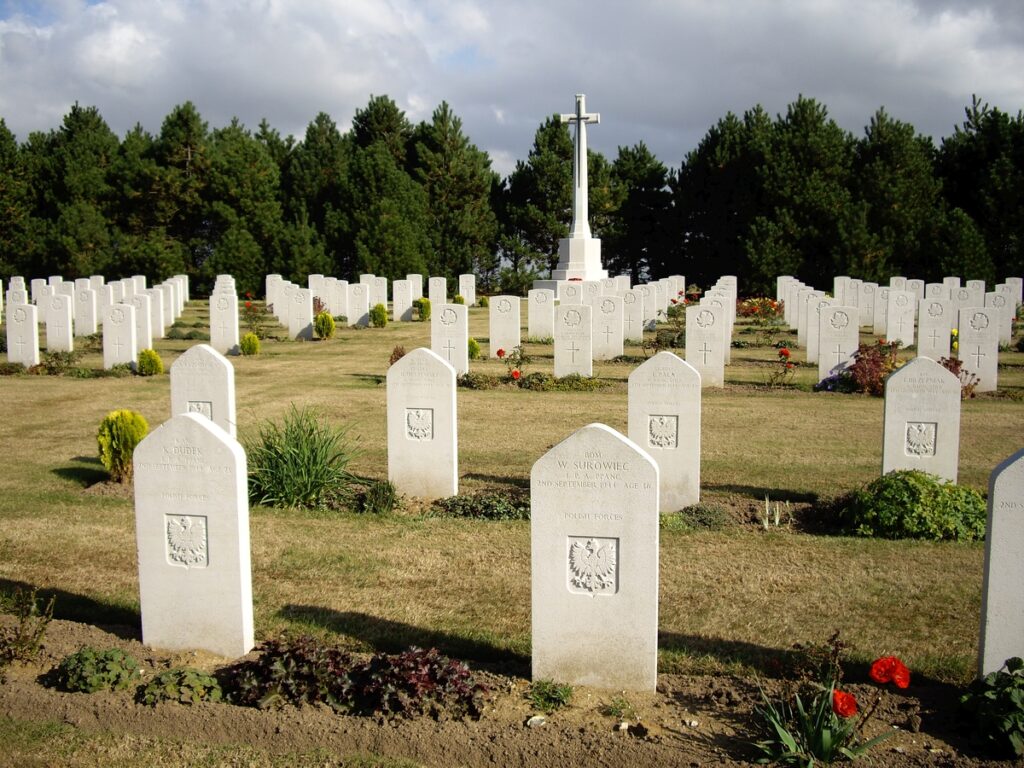
—Basia Scrivens
2 September 2024
_______________
If you would like to comment on this post, or any other story, please email editor@polishhistorynewzealand.org/
